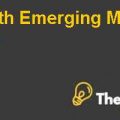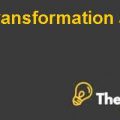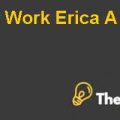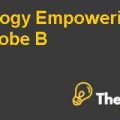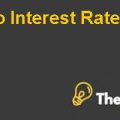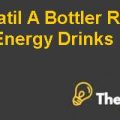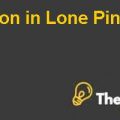Ferrari: the 2015 IPO Case Study Help
Enterprise Value and Share Price in Dollars:
The cost of capital we have taken was 5 percent. After assuming the cost of capital of 5 percent, we have considered the perpetuity growth model in which we have assumed that the cash flow will be growing with the constant growth rate of around 2 percent. However, it might be difficult to use this model, but it is crucial to determine the growth rate by which the cash flows will grow or is expected to grow.
The enterprise value of the Ferrari Company is 9,113 million dollars. The enterprise value is an essential useful tool used to find and measure the value of the company. It seems to be the alternative which is comprehensive to the equity market capitalization. The share price of the Ferrari Company is 48.22 per share in Euros and 54.85 per share in dollars.
Pros and Cons of Using Market Multiple Business Valuation Approach:
The pros of determining the value of business by using market multiples, includes:
- The market multiple approach valuation techniques involves simple calculations and can be easily explained to the investors.
- The data used in the market multiple valuation technique is real i.e. based on actual figures.
- This valuation approach does not involve subjective forecasts or assumptions therefore, the results or value determined by the approach seems to be accurate as compared to other valuation methods that involve high degree of subjectivity.
- The data used in the market multiple valuation method is easy to find, as the data is available publically and can be accessed easily by anyone.
- The market multiple can also be used as a tool to assess the performance of the business, as higher market multiple indicates the higher enterprise value and suggeststhat the business does possess high growth potential and prospects.
The cons of determining the value of business using market multiples, include:
- The value determined using this method might not be compared with assets or business worth of other companies as the companies might have different accounting policies despite operating in the same industry.
- The multiples used in this approach might be misinterpreted or incomparable due to differences in accounting policies of different companies. Therefore, the multiples used will have a requirement to be adjusted according to the accounting policies, and tend to consume more time as compared to other companies.
- The valuation method does not take into account the growth in the business operation, while determining its value. Since the method fails to consider the growth aspect of the business; the value determined by this method might be unreliable.
- The value determined by using this method might not be reliable as this method uses the company’s financial data i.e. Earnings before interest tax depreciation and Amortization (EBITDA), which might be manipulated by the organization for showing a positive performance of its business.
Potential Benefits and Cost of Ferrari’s Spinoff and IPO:
The potential benefits of spinoff the public companies often end up resulting to a series several disadvantages that might make anyone think twice about going public. One of the most important changes is the need for added disclosure for investors. In addition, public companies are regulated by the Securities Exchange Act of 1934 in regards to the periodic financial reporting, which might be difficult for newer public companies to follow. They must also meet other rules and regulations that are monitored by the Securities and Exchange Commission (SEC).
Exhibit 1
| 2012 | 2013 | 2014 | First Half 2015 |
Growth Rate | |
| Sales | |||||
| Cars and Spare Parts | 1,695 | 1,655 | 1,944 | 1,007 | 7% |
| Engines | 77 | 188 | 311 | 121 | 101% |
| Sponsorship, Commercial and Brand | 385 | 412 | 417 | 212 | 4% |
| Other | 69 | 80 | 91 | 46 | 15% |
| Total Sales | 2,225 | 2,335 | 2,762 | 1,387 | 11% |
| Cost of Sales excluding Dep and Amort | 961 | 964 | 1,217 | 592 | 13% |
| Depreciation & Amortization Expense | 238 | 270 | 289 | 130 | 10% |
| Selling, General, and Admin. Expense | 243 | 260 | 300 | 152 | 11% |
| Research & Development | 431 | 479 | 541 | 291 | 12% |
| Other Operating Expense | 17 | -2 | 26 | 4 | 24% |
| Operating Income (EBIT) | 335 | 364 | 389 | 218 | 8% |
| Net Financial Income (Expense) | -1 | 3 | 9 | -27 | |
| Profit before Tax | 335 | 366 | 398 | 191 | 9% |
| Income Tax Expense | 101 | 120 | 133 | 65 | 15% |
| Net Profit | 233 | 246 | 265 | 126 | 7% |
| Capital Expenditures | 258 | 271 | 330 | 151 | 13% |
| EBITDA | 573 | 634 | 678 | 348 | 9% |
| EBITDA/Total Sales | 26% | 27% | 25% | 25% | -2% |
....................................
This is just a sample partical work. Please place the order on the website to get your own originally done case solution.

